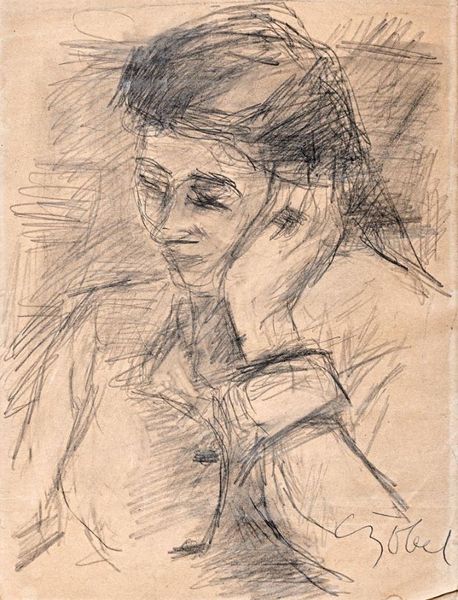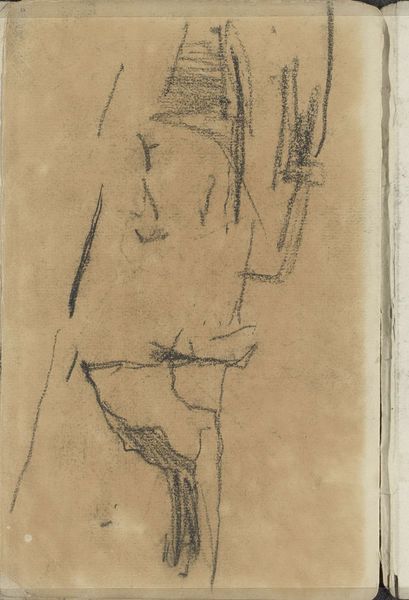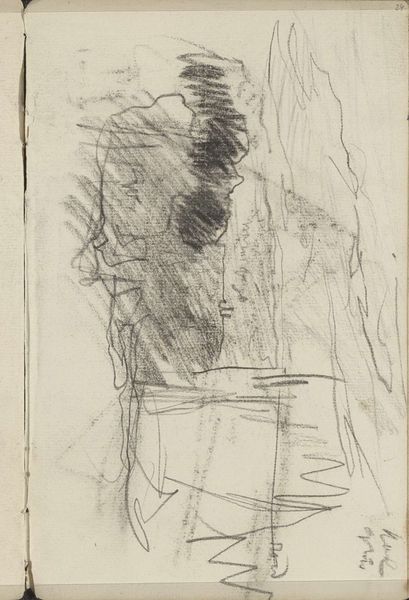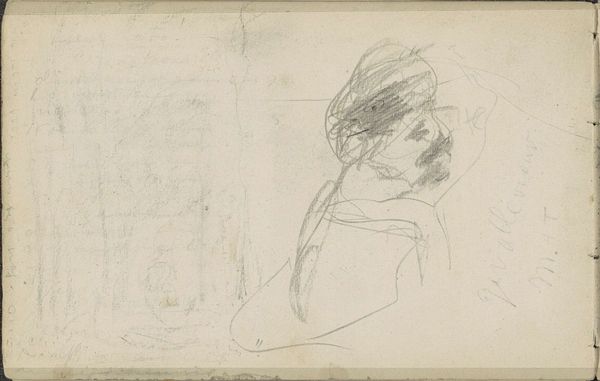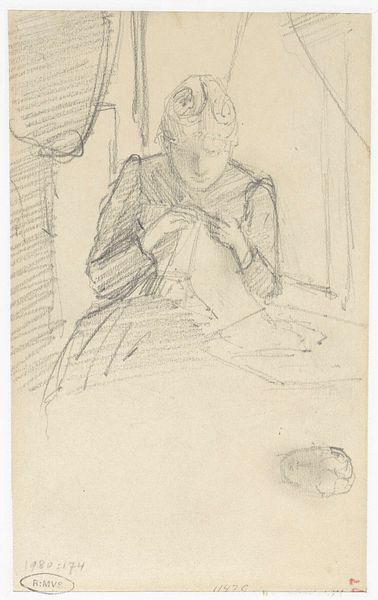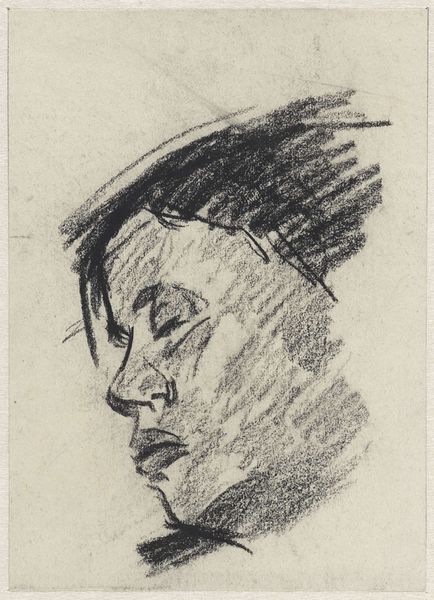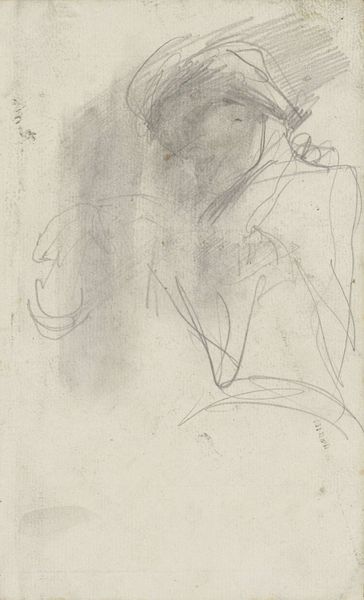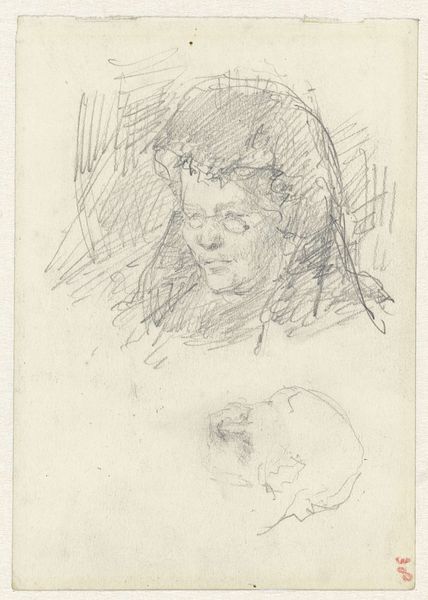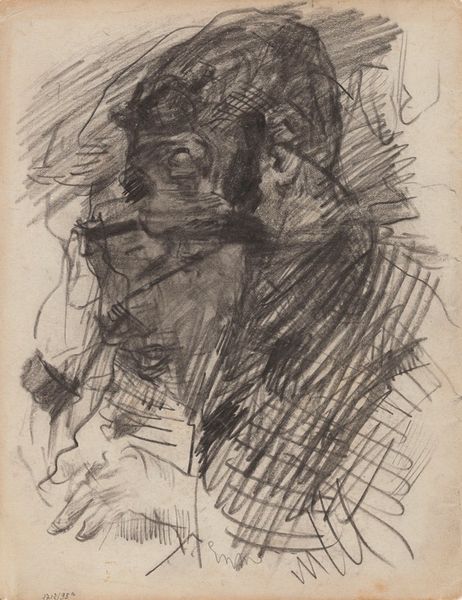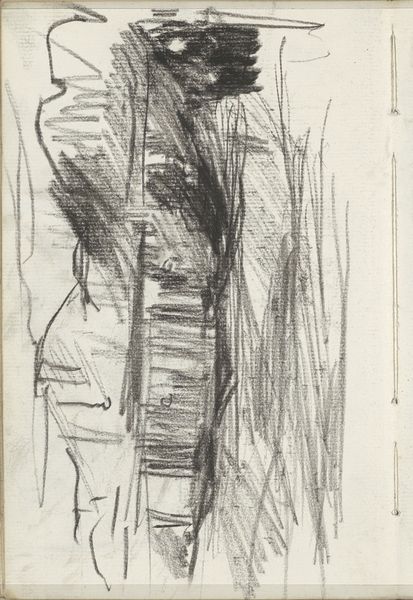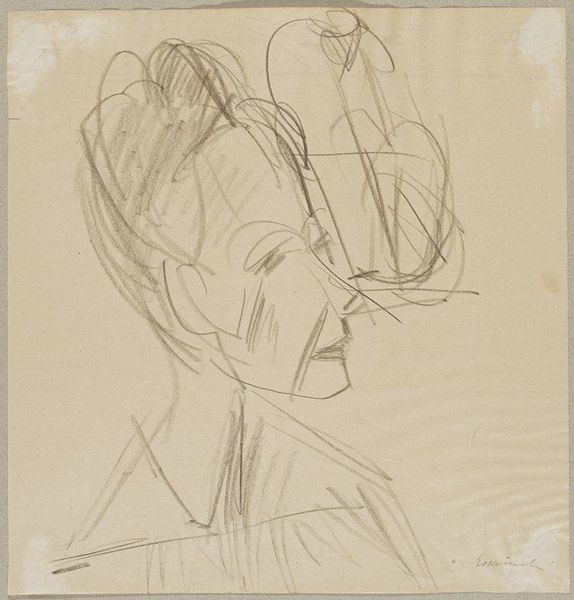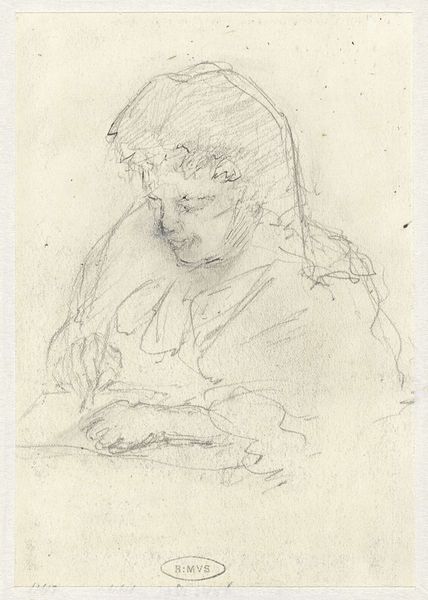
#
portrait
#
light pencil work
#
pencil sketch
#
sketch book
#
personal sketchbook
#
idea generation sketch
#
sketchwork
#
pen-ink sketch
#
sketchbook drawing
#
storyboard and sketchbook work
#
sketchbook art
Dimensions: height 102 mm, width 66 mm
Copyright: Rijks Museum: Open Domain
Curator: Here we have George Hendrik Breitner's "Portrait of Marie Breitner," created sometime between 1880 and 1923. It's a quick pencil sketch, likely from a personal sketchbook, and it now resides in the Rijksmuseum collection. Editor: My first impression is one of intimacy. The hurried lines, the obscured features beneath the hat—it feels like we're intruding on a private moment, a glimpse into the artist's personal world. There is a gentleness but also perhaps a feeling of being hidden. Curator: Indeed. It’s tempting to see this piece through the lens of Breitner’s artistic practice. His focus on capturing the immediacy of urban life extends even into these intimate portraits. He was deeply interested in photographic realism. You can feel his attempt at documenting his perception and understanding of visual phenomenon in a fleeting, honest moment in his sketch style. Editor: Precisely! That immediacy resonates. I can't help but think about the role of women in art during that period. Marie is presented, but she is concealed by that large, shadowed hat. Her individuality appears subordinate. How much of this aesthetic choice reveals broader power dynamics at play? Curator: A valid point, and an area worthy of exploration, for sure. But from a historical perspective, such hats were not uncommon, as markers of class and respectability at the time. Think of the impressionist artists; their use of contemporary fashion shows their modern outlook, although, indeed, it still falls short of questioning the social status of women. It does make you think of the role that class played within family dynamics. Editor: It invites reflection. Art doesn’t exist in a vacuum. Even the seemingly simple gesture of a portrait contains layered meaning related to cultural standards and individual identities. This interplay makes it an exciting subject for interpretation, prompting us to consider Marie's role, not just as a muse, but as an individual navigating a specific socio-political landscape. Curator: I agree entirely. And this sketch, seemingly so simple, reminds us how art and representation are fundamentally linked to the cultural, societal norms, and socio-political context of their creation. Editor: In that way, art prompts conversation beyond just aesthetics. Looking closely, it allows us to look closely at ourselves and the social narratives we weave.
Comments
No comments
Be the first to comment and join the conversation on the ultimate creative platform.
